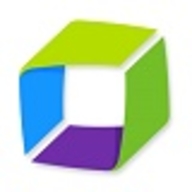

Dynatrace and Google Cloud's operations suite compete in cloud monitoring and management. Dynatrace has the upper hand in support, while Google Cloud's operations suite is favored for features, which users find worth the price.
What features are offered by Dynatrace in comparison to Google Cloud's operations suite (formerly Stackdriver)?Dynatrace offers advanced AIOps capabilities, automated root cause analysis, and full-stack monitoring. Users find it easy to use and appreciate its comprehensive monitoring. Google Cloud's operations suite provides seamless integration with Google Cloud services, robust logging, monitoring tools, and custom dashboards. It is effective for managing Google Cloud resources and has an edge in feature integration with other Google services.
What areas of improvement can be found in Dynatrace in comparison to Google Cloud's operations suite (formerly Stackdriver)?Dynatrace users desire enhancements in database monitoring, better pricing models, and more significant pricing adjustments. Google Cloud's operations suite users seek improvements in alerting capabilities, more granular control over logging features, and better customer feedback.
How is the ease of deployment and customer service of Dynatrace in comparison to Google Cloud's operations suite (formerly Stackdriver)?Dynatrace offers a smooth deployment process with extensive support and onboarding assistance. Customer service is consistent and reliable. Google Cloud's operations suite provides a straightforward deployment process, especially for existing Google Cloud users, though customer service quality can vary.
What setup costs and ROI can be seen with Dynatrace in comparison to Google Cloud's operations suite (formerly Stackdriver)?Dynatrace setup costs are high, but ROI is appreciated due to its comprehensive capabilities. Google Cloud's operations suite offers flexible pricing that aligns with user budgets, making ROI dependent on existing investments in Google Cloud services. Dynatrace's higher costs are justified by its advanced features, while Google Cloud's suite provides cost-effective options for existing Google Cloud users.
| Product | Market Share (%) |
|---|---|
| Dynatrace | 8.1% |
| Google Cloud's operations suite (formerly Stackdriver) | 1.1% |
| Other | 90.8% |


| Company Size | Count |
|---|---|
| Small Business | 76 |
| Midsize Enterprise | 50 |
| Large Enterprise | 289 |
| Company Size | Count |
|---|---|
| Small Business | 2 |
| Midsize Enterprise | 1 |
| Large Enterprise | 8 |
Dynatrace is an AI-powered software intelligence monitoring platform that accelerates digital transformation and simplifies cloud complexities. Dynatrace is an entirely automated full-stack solution that provides data and answers about the performance of your applications and deep insight into every transaction throughout every application, including the end-user experience. By modernizing and automating enterprise cloud operations, users can deliver an optimal digital experience with higher quality software to customers faster.
Dynatrace offers an all-in-one automated artificial intelligence solution that brings together application performance, cloud and infrastructure, and digital experience monitoring. Dynatrace accelerates performance-driven results through operations, development, and business teams with a shared metrics platform. In addition, users are provided a full-stack monitoring experience with three patented technologies:
What does Dynatrace offer?
Dynatrace redefines how organizations monitor their digital ecosystems. The solution offers:
Reviews from Real Users
Dynatrace is the only solution that provides answers to organizations based on deep insight into each user, transaction, and organization's environment.
Barry P., a managing performance engineer at Medica Health Plans, writes, "With Dynatrace, we have synthetic checks and real-user monitoring of all of our websites, places where members and providers can interact with us over the web. We monitor the response times of those with Dynatrace, and it's all integrated into one place."
A consultant at a tech service company notes, "A feature that's one of the highlights of Dynatrace is the AI. The second most valuable feature is OneAgent. Between infrastructures, applications, operating systems, you can deploy with just a single agent and can practically install and forget about it."
Real-time log management and analysis
Cloud Logging is a fully managed service that performs at scale and can ingest application and platform log data, as well as custom log data from GKE environments, VMs, and other services inside and outside of Google Cloud. Get advanced performance, troubleshooting, security, and business insights with Log Analytics, integrating the power of BigQuery into Cloud Logging.
Built-in metrics observability at scale
Cloud Monitoring provides visibility into the performance, uptime, and overall health of cloud-powered applications. Collect metrics, events, and metadata from Google Cloud services, hosted uptime probes, application instrumentation, and a variety of common application components. Visualize this data on charts and dashboards and create alerts so you are notified when metrics are outside of expected ranges.
Stand-alone managed service for running and scaling Prometheus
Managed Service for Prometheus is a fully managed Prometheus-compatible monitoring solution, built on top of the same globally scalable data store as Cloud Monitoring. Keep your existing visualization, analysis, and alerting services, as this data can be queried with PromQL or Cloud Monitoring.
Monitor and improve your application's performance
Application Performance Management (APM) combines the monitoring and troubleshooting capabilities of Cloud Logging and Cloud Monitoring with Cloud Trace and Cloud Profiler to help you reduce latency and cost so you can run more efficient applications.
We monitor all Application Performance Monitoring (APM) and Observability reviews to prevent fraudulent reviews and keep review quality high. We do not post reviews by company employees or direct competitors. We validate each review for authenticity via cross-reference with LinkedIn, and personal follow-up with the reviewer when necessary.